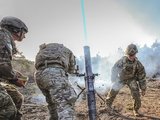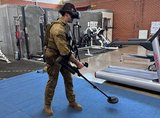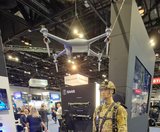Cubic tailors mortar simulator for the US Army
The company’s mortar trainer received improvements based on soldier’s feedback.
This approach provides more realistic training environments. (Photo: USC ICT)
The US Army has been increasing efforts to improve its simulation capabilities by combining artificial intelligence (AI) and the operation of UAVs with a new technology known as 3D Gaussian Splatting (3DGS). This volume rendering technique enables the creation of high-quality visually realistic scenes by merging multiple photos or videos.
As part of this effort, the service is partnering with the University of Southern California - Institute for Creative Technologies (USC ICT) in a project named “3D Geospatial Terrain - Large-Scale Gaussian Splatting”.
This initiative addresses the challenges of using traditional polygon-based models and focuses on a hybrid approach by
Already have an account? Log in

The company’s mortar trainer received improvements based on soldier’s feedback.

The company will operate in two new locations in the coming years to better support US services.

This type of tool provides more realistic training easing the incorporation of new scenarios that accurately represent the threats of the battlefield.

The Engineering Corps has been conducting individual instruction using FLAIM Systems’ Sweeper and should start collective deployments in 2025.

The next-generation platform is motion-compatible and can be used in OTW and NVG applications.

The system can be used to prepare soldiers for both drone offensive operations and CUAS missions.